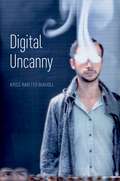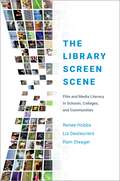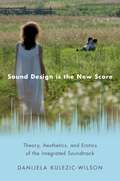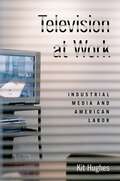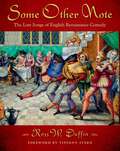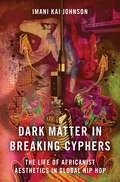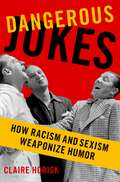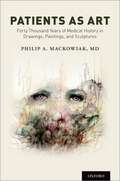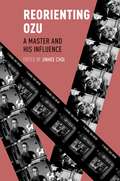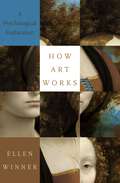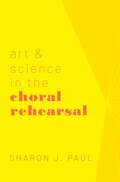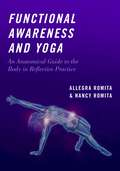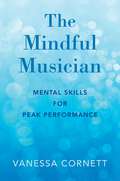- Table View
- List View
Digital Uncanny
by Kriss Ravetto-BiagioliWe are now confronted with a new type of uncanny experience, an uncanny evoked by parallel processing, aggregate data, and cloud-computing. The digital uncanny does not erase the uncanny feeling we experience as déjà vu or when confronted with robots that are too lifelike. Today's uncanny refers to how non-human devices (surveillance technologies, algorithms, feedback, and data flows) anticipate human gestures, emotions, actions, and interactions, thus intimating that we are but machines and that our behavior is predicable precisely because we are machinic. It adds another dimension to those feelings in which we question whether our responses are subjective or automated - automated as in reducing one's subjectivity to patterns of data and using those patterns to present objects or ideas that would then elicit one's genuinely subjective-yet effectively preset-response. In fact, this anticipation of our responses is a feedback loop that we humans have produced by designing software that can study our traces, inputs, and moves. In this sense one could say that the digital uncanny is a trick we play on ourselves, a trick that we would not be able to play had we not developed sophisticated digital technologies. Digital Uncanny explores how digital technologies, particularly software systems working through massive amounts of data, are transforming the meaning of the uncanny that Freud tied to a return of repressed memories, desires, and experiences to their anticipation. Through a close reading of interactive and experimental art works of Rafael Lozano-Hemmer, Bill Viola, Simon Biggs, Sue Hawksley, and Garth Paine, this book is designed to explore how the digital uncanny unsettles and estranges concepts of "self," "affect," "feedback" and "aesthetic experience," forcing us to reflect on our relationship with computational media and by extension our relationship to each other and our experience of the world.
DIGITAL UNCANNY C
by Kriss Ravetto-BiagioliWe are now confronted with a new type of uncanny experience, an uncanny evoked by parallel processing, aggregate data, and cloud-computing. The digital uncanny does not erase the uncanny feeling we experience as déjà vu or when confronted with robots that are too lifelike. Today's uncanny refers to how non-human devices (surveillance technologies, algorithms, feedback, and data flows) anticipate human gestures, emotions, actions, and interactions, thus intimating that we are but machines and that our behavior is predicable precisely because we are machinic. It adds another dimension to those feelings in which we question whether our responses are subjective or automated - automated as in reducing one's subjectivity to patterns of data and using those patterns to present objects or ideas that would then elicit one's genuinely subjective-yet effectively preset-response. In fact, this anticipation of our responses is a feedback loop that we humans have produced by designing software that can study our traces, inputs, and moves. In this sense one could say that the digital uncanny is a trick we play on ourselves, a trick that we would not be able to play had we not developed sophisticated digital technologies. Digital Uncanny explores how digital technologies, particularly software systems working through massive amounts of data, are transforming the meaning of the uncanny that Freud tied to a return of repressed memories, desires, and experiences to their anticipation. Through a close reading of interactive and experimental art works of Rafael Lozano-Hemmer, Bill Viola, Simon Biggs, Sue Hawksley, and Garth Paine, this book is designed to explore how the digital uncanny unsettles and estranges concepts of "self," "affect," "feedback" and "aesthetic experience," forcing us to reflect on our relationship with computational media and by extension our relationship to each other and our experience of the world.
The Library Screen Scene: Film and Media Literacy in Schools, Colleges, and Communities
by Renee Hobbs Liz Deslauriers Pam SteagerIn the past two decades, several U.S. states have explored ways to mainstream media literacy in school curriculum. However one of the best and most accessible places to learn this necessary skill has not been the traditional classroom but rather the library. In an increasing number of school, public, and academic libraries, shared media experiences such as film screening, learning to computer animate, and video editing promote community and a sense of civic engagement. The Library Screen Scene reveals five core practices used by librarians who work with film and media: viewing, creating, learning, collecting, and connecting. With examples from more than 170 libraries throughout the United States, the book shows how film and media literacy education programs, library services, and media collections teach patrons to critically analyze moving image media, uniting generations, cultures, and communities in the process.
LIBRARY SCREEN C: Film and Media Literacy in Schools, Colleges, and Communities
by Renee Hobbs Liz Deslauriers Pam SteagerIn the past two decades, several U.S. states have explored ways to mainstream media literacy in school curriculum. However one of the best and most accessible places to learn this necessary skill has not been the traditional classroom but rather the library. In an increasing number of school, public, and academic libraries, shared media experiences such as film screening, learning to computer animate, and video editing promote community and a sense of civic engagement. The Library Screen Scene reveals five core practices used by librarians who work with film and media: viewing, creating, learning, collecting, and connecting. With examples from more than 170 libraries throughout the United States, the book shows how film and media literacy education programs, library services, and media collections teach patrons to critically analyze moving image media, uniting generations, cultures, and communities in the process.
Sound Design is the New Score: Theory, Aesthetics, and Erotics of the Integrated Soundtrack (Oxford Music/Media Series)
by Danijela Kulezic-WilsonThe practice of blurring the line between score and sound design has transformed contemporary film soundscape by challenging not only the long-established hierarchical relationships between dialogue, music, and sound effects, but also the modes of perception shaped by classical soundtrack practices. The methods of this new trend rely on the language of contemporary popular and art music, producing soundtracks in which it is difficult to tell the difference between score and ambient sound, where pieces of electroacoustic music are merged with diegetic sound, sound effects are absorbed into the score or treated as music, and diegetic sound is treated as musique concrète. In Sound Design is the New Score, Kulezic-Wilson explores theoretical, aesthetic, and sensuous dimensions of this new trend, providing a multifaceted portrait of a practice which recognizes the interconnectedness of all soundtrack elements and emphasizes their inherent musicality. The aesthetic concerns of this practice are illuminated through the concept of the aesthetics of reticence which rejects classical narrative and scoring conventions and uses integrated soundtrack strategies to create the space for mystery in art and for individuality in the cinematic experience. The book's emphasis on sensuous and musical aspects of this practice, informed by the feminist discourse on the erotics of art, challenges popular notions about sensory cinema, demonstrating that the sensuousness of film form and its soundscapes is more sophisticated than simply being the result of excessive sensory stimulation facilitated by the use of digital technology or the "intensified" aesthetics it inspires. The discussion is supported by a wide range of case studies from American Independent, Asian, Australian, and European cinemas, including films by Shane Carruth, Claire Denis, Hou Hsiao-Hsien, Harmony Korine, David Michôd, Gus Van Sant, and Peter Strickland.
SOUND DESIGN IS THE NEW SCORE OMMS C: Theory, Aesthetics, and Erotics of the Integrated Soundtrack (Oxford Music/Media Series)
by Danijela Kulezic-WilsonThe practice of blurring the line between score and sound design has transformed contemporary film soundscape by challenging not only the long-established hierarchical relationships between dialogue, music, and sound effects, but also the modes of perception shaped by classical soundtrack practices. The methods of this new trend rely on the language of contemporary popular and art music, producing soundtracks in which it is difficult to tell the difference between score and ambient sound, where pieces of electroacoustic music are merged with diegetic sound, sound effects are absorbed into the score or treated as music, and diegetic sound is treated as musique concrète. In Sound Design is the New Score, Kulezic-Wilson explores theoretical, aesthetic, and sensuous dimensions of this new trend, providing a multifaceted portrait of a practice which recognizes the interconnectedness of all soundtrack elements and emphasizes their inherent musicality. The aesthetic concerns of this practice are illuminated through the concept of the aesthetics of reticence which rejects classical narrative and scoring conventions and uses integrated soundtrack strategies to create the space for mystery in art and for individuality in the cinematic experience. The book's emphasis on sensuous and musical aspects of this practice, informed by the feminist discourse on the erotics of art, challenges popular notions about sensory cinema, demonstrating that the sensuousness of film form and its soundscapes is more sophisticated than simply being the result of excessive sensory stimulation facilitated by the use of digital technology or the "intensified" aesthetics it inspires. The discussion is supported by a wide range of case studies from American Independent, Asian, Australian, and European cinemas, including films by Shane Carruth, Claire Denis, Hou Hsiao-Hsien, Harmony Korine, David Michôd, Gus Van Sant, and Peter Strickland.
Television at Work: Industrial Media and American Labor
by Kit HughesTelevision has never been exclusive to the home. In Television at Work, Kit Hughes explores the forgotten history of how U.S. workplaces used television to secure industrial efficiency, support corporate expansion, and manage the hearts, minds, and bodies of twentieth century workers. Challenging our longest-held understandings of the medium, Hughes positions television at the heart of a post-Fordist reconfiguration of the American workplace revolving around dehumanized technological systems. Among other things, business and industry built private television networks to distribute programming, created complex CCTV data retrieval systems, encouraged the use of videotape for worker self-evaluation, used video cassettes for training distributed workforces, and wired cantinas for employee entertainment. In uncovering industrial television as a prolific sphere of media practice, Television at Work reveals how labor arrangements and information architectures shaped by these uses of television were foundational to the rise of the digitally mediated corporation and to a globalizing economy.
TELEVISION AT WORK C: Industrial Media and American Labor
by Kit HughesTelevision has never been exclusive to the home. In Television at Work, Kit Hughes explores the forgotten history of how U.S. workplaces used television to secure industrial efficiency, support corporate expansion, and manage the hearts, minds, and bodies of twentieth century workers. Challenging our longest-held understandings of the medium, Hughes positions television at the heart of a post-Fordist reconfiguration of the American workplace revolving around dehumanized technological systems. Among other things, business and industry built private television networks to distribute programming, created complex CCTV data retrieval systems, encouraged the use of videotape for worker self-evaluation, used video cassettes for training distributed workforces, and wired cantinas for employee entertainment. In uncovering industrial television as a prolific sphere of media practice, Television at Work reveals how labor arrangements and information architectures shaped by these uses of television were foundational to the rise of the digitally mediated corporation and to a globalizing economy.
Some Other Note: The Lost Songs of English Renaissance Comedy
by Ross W. DuffinEnglish comedy from the fifteenth to the early seventeenth century abounds in song lyrics, but most of the original tunes were thought to have been lost--until now. By deducing that playwrights borrowed melodies from songs they already knew, Ross W. Duffin has used the existing English repertory of songs, both popular and composed, to reconstruct hundreds of songs from more than a hundred plays and other stage entertainments. Thanks to Duffin's incredible breakthrough, these plays have been rendered performable with period music for the first time in five hundred years. Some Other Note not only brings these songs back from the dead, but tells a thrilling tale of the investigations that unraveled these centuries-old mysteries.
Some Other Note: The Lost Songs of English Renaissance Comedy
by Ross W. DuffinEnglish comedy from the fifteenth to the early seventeenth century abounds in song lyrics, but most of the original tunes were thought to have been lost--until now. By deducing that playwrights borrowed melodies from songs they already knew, Ross W. Duffin has used the existing English repertory of songs, both popular and composed, to reconstruct hundreds of songs from more than a hundred plays and other stage entertainments. Thanks to Duffin's incredible breakthrough, these plays have been rendered performable with period music for the first time in five hundred years. Some Other Note not only brings these songs back from the dead, but tells a thrilling tale of the investigations that unraveled these centuries-old mysteries.
Dark Matter in Breaking Cyphers: The Life of Africanist Aesthetics in Global Hip Hop
by Imani Kai JohnsonThe dance circle (called the cypher) is a common signifier of breaking culture, known more for its spectacular moves than as a ritual practice with foundations in Africanist aesthetics. Yet those foundationsevident in expressive qualities like call and response, the aural kinesthetic, the imperative to be original, and moreare essential to cyphering's enduring presence on the global stage. What can cyphers activate beyond the spectacle? What lessons do cyphers offer about moving through and navigating the social world? And what possibilities for the future do they animate? With an interdisciplinary reach and a riff on physics, author Imani Kai Johnson centers the voices of practitioners in a study of breaking events in cities across the US, Canada, and parts of Europe. Dark Matter in Breaking Cyphers: the Life of Africanist Aesthetics in Global Hip Hop draws on over a decade of research and provides a detailed look into the vitality of Africanist aesthetics and the epistemological possibilities of the ritual circle.
Dark Matter in Breaking Cyphers: The Life of Africanist Aesthetics in Global Hip Hop
by Imani Kai JohnsonThe dance circle (called the cypher) is a common signifier of breaking culture, known more for its spectacular moves than as a ritual practice with foundations in Africanist aesthetics. Yet those foundationsevident in expressive qualities like call and response, the aural kinesthetic, the imperative to be original, and moreare essential to cyphering's enduring presence on the global stage. What can cyphers activate beyond the spectacle? What lessons do cyphers offer about moving through and navigating the social world? And what possibilities for the future do they animate? With an interdisciplinary reach and a riff on physics, author Imani Kai Johnson centers the voices of practitioners in a study of breaking events in cities across the US, Canada, and parts of Europe. Dark Matter in Breaking Cyphers: the Life of Africanist Aesthetics in Global Hip Hop draws on over a decade of research and provides a detailed look into the vitality of Africanist aesthetics and the epistemological possibilities of the ritual circle.
The Oxford Handbook of Palmyra (Oxford Handbooks)
The monumental remains of Palmyra (also known as Tadmor) have fascinated travelers and scholars for centuries. The Oxford Handbook of Palmyra gives a detailed analysis of the archaeology and history of this ancient oasis city in the Syrian Desert, spanning evidence from several millennia. With contributions from thirty archaeologists, epigraphists, historians, and philologists, this book covers the city's archaeological findings and history from its earliest mentions in the pre-Roman era to the destruction of many of its monuments during the Syrian Civil War and the subsequent looting. The authors recap evidence and present significant new findings and analyses from fieldwork they or others undertook in Palmyra prior to the 2011 conflict and discuss the recent occupation by ISIS and calls to defend the site's remains from current and future threats. A broad range of themes are covered, which not only relate to the archaeology and history of the site, but also to its standing and relationship with the rest of the ancient world as a major trade hub connecting routes from East to West during the Roman period. Thirty-seven chapters relay firsthand expert knowledge in an accessible style and include up-to-date bibliographies, making this handbook an ideal and comprehensive resource for professional researchers, students, and anyone interested in this major UNESCO World Heritage Site.
The Oxford Handbook of Palmyra (Oxford Handbooks)
by Rubina RajaThe monumental remains of Palmyra (also known as Tadmor) have fascinated travelers and scholars for centuries. The Oxford Handbook of Palmyra gives a detailed analysis of the archaeology and history of this ancient oasis city in the Syrian Desert, spanning evidence from several millennia. With contributions from thirty archaeologists, epigraphists, historians, and philologists, this book covers the city's archaeological findings and history from its earliest mentions in the pre-Roman era to the destruction of many of its monuments during the Syrian Civil War and the subsequent looting. The authors recap evidence and present significant new findings and analyses from fieldwork they or others undertook in Palmyra prior to the 2011 conflict and discuss the recent occupation by ISIS and calls to defend the site's remains from current and future threats. A broad range of themes are covered, which not only relate to the archaeology and history of the site, but also to its standing and relationship with the rest of the ancient world as a major trade hub connecting routes from East to West during the Roman period. Thirty-seven chapters relay firsthand expert knowledge in an accessible style and include up-to-date bibliographies, making this handbook an ideal and comprehensive resource for professional researchers, students, and anyone interested in this major UNESCO World Heritage Site.
Patients as Art: Forty Thousand Years of Medical History in Drawings, Paintings, and Sculpture
by Philip A. MackowiakPatients as Art explores the capacity of art to provide a unique perspective on the history of humankind. Fearturing over 160 full-color works of art, this book offers a pictorial review of medical history stretching from Paleolithic times to the present, reflecting the ideals and sensibilities of the times in which they were created, and communicating formal, spiritual, and scientific values. Rarely have experts considered the potential clinical implications of such works or their collective value as an archive of medical history. Many prominent works of art have depicted aspects of medicine's long struggle against ignorance, superstition, and religious and political dogma to emerge as one of mankind's greatest achievements. The particular works included in this book were chosen both for their esthetic appeal and for the skill with which they depict important developments in medicine over time. Dr. Mackowiak reveals what these works have to say about the status of the "art of medicine" in the past, and its relationship to the medicine of today.
Patients as Art: Forty Thousand Years of Medical History in Drawings, Paintings, and Sculpture
by Philip A. MackowiakPatients as Art explores the capacity of art to provide a unique perspective on the history of humankind. Fearturing over 160 full-color works of art, this book offers a pictorial review of medical history stretching from Paleolithic times to the present, reflecting the ideals and sensibilities of the times in which they were created, and communicating formal, spiritual, and scientific values. Rarely have experts considered the potential clinical implications of such works or their collective value as an archive of medical history. Many prominent works of art have depicted aspects of medicine's long struggle against ignorance, superstition, and religious and political dogma to emerge as one of mankind's greatest achievements. The particular works included in this book were chosen both for their esthetic appeal and for the skill with which they depict important developments in medicine over time. Dr. Mackowiak reveals what these works have to say about the status of the "art of medicine" in the past, and its relationship to the medicine of today.
REORIENTING OZU C: A Master and His Influence
by Jinhee ChoiConsidered by many film critics and scholars as a master of Japanese Cinema, director Ozu Yasujiro still inspires filmmakers both within and outside of Japan. With fifteen never before published chapters in English by contributors from North America, Europe, and Japan, Reorienting Ozu explores the Japanese director's oeuvre and his lasting impact on global art cinema. Exploring major theoretical frameworks that characterize Ozu studies, chapters consider the various cultural factors that influenced the director's cinematic output, such as the anxiety of middleclass Japan in the 1930s, the censorship imposed by the US-occupation after World War II, and women's rights in Ozu's late work such as Tokyo Twilight (1957). Ultimately, chapters illuminate Ozu's influence on the directors of Japan and beyond. With the recent restoration and re-release of Ozu's early and late films, this volume provides an opportunity to examine not only the auteur's major works but also the relationships--both cultural and aesthetic--that are forged among directors across the world.
How Art Works: A Psychological Exploration
by Ellen WinnerThere is no end of talk and of wondering about 'art' and 'the arts.' This book examines a number of questions about the arts (broadly defined to include all of the arts). Some of these questions come from philosophy. Examples include: · What makes something art? · Can anything be art? · Do we experience "real" emotions from the arts? · Why do we seek out and even cherish sorrow and fear from art when we go out of our way to avoid these very emotions in real life? · How do we decide what is good art? Do aesthetic judgments have any objective truth value? · Why do we devalue fakes even if we -- indeed, even the experts--- can't tell them apart from originals? · Does fiction enhance our empathy and understanding of others? Is art-making therapeutic? Others are "common sense" questions that laypersons wonder about. Examples include: · Does learning to play music raise a child's IQ? · Is modern art something my kid could do? · Is talent a matter of nature or nurture? This book examines puzzles about the arts wherever their provenance - as long as there is empirical research using the methods of social science (interviews, experimentation, data collection, statistical analysis) that can shed light on these questions. The examined research reveals how ordinary people think about these questions, and why they think the way they do - an inquiry referred to as intuitive aesthetics. The book shows how psychological research on the arts has shed light on and often offered surprising answers to such questions.
How Art Works: A Psychological Exploration
by Ellen WinnerThere is no end of talk and of wondering about 'art' and 'the arts.' This book examines a number of questions about the arts (broadly defined to include all of the arts). Some of these questions come from philosophy. Examples include: · What makes something art? · Can anything be art? · Do we experience "real" emotions from the arts? · Why do we seek out and even cherish sorrow and fear from art when we go out of our way to avoid these very emotions in real life? · How do we decide what is good art? Do aesthetic judgments have any objective truth value? · Why do we devalue fakes even if we -- indeed, even the experts--- can't tell them apart from originals? · Does fiction enhance our empathy and understanding of others? Is art-making therapeutic? Others are "common sense" questions that laypersons wonder about. Examples include: · Does learning to play music raise a child's IQ? · Is modern art something my kid could do? · Is talent a matter of nature or nurture? This book examines puzzles about the arts wherever their provenance - as long as there is empirical research using the methods of social science (interviews, experimentation, data collection, statistical analysis) that can shed light on these questions. The examined research reveals how ordinary people think about these questions, and why they think the way they do - an inquiry referred to as intuitive aesthetics. The book shows how psychological research on the arts has shed light on and often offered surprising answers to such questions.
Art & Science in the Choral Rehearsal
by Sharon J. PaulIn recent decades, cognitive neuroscience research has increased our understanding of how the brain learns, retains, and recalls information. At the same time, social psychologists have developed insights into group dynamics, exploring what motivates individuals in a group to give their full effort, or conversely, what might instead inspire them to become free loaders. Art and Science in the Choral Rehearsal explores the idea that choral conductors who better understand how the brain learns, and how individuals within groups function, can lead more efficient, productive, and enjoyable rehearsals. Armed with this knowledge, conductors can create rehearsal techniques which take advantage of certain fundamental brain and social psychology principles. Through such approaches, singers will become increasingly engaged physically and mentally in the rehearsal process. Art and Science in the Choral Rehearsal draws from a range of scientific studies to suggest and encourage effective, evidence-based techniques, and can help serve to reset and inspire new approaches toward teaching. Each chapter outlines exercises and creative ideas for conductors and music teachers, including the importance of embedding problem solving into rehearsal, the use of multiple entry points for newly acquired information, techniques to encourage an emotional connection to the music, and ways to incorporate writing exercises into rehearsal. Additional topics include brain-compatible teaching strategies to complement thorough score study, the science behind motivation, the role imagination plays in teaching, the psychology of rehearsal, and conducting tips and advice. All of these brain-friendly strategies serve to encourage singers' active participation in rehearsals, with the goal of motivating beautiful, inspired, and memorable performances.
Art & Science in the Choral Rehearsal
by Sharon J. PaulIn recent decades, cognitive neuroscience research has increased our understanding of how the brain learns, retains, and recalls information. At the same time, social psychologists have developed insights into group dynamics, exploring what motivates individuals in a group to give their full effort, or conversely, what might instead inspire them to become free loaders. Art and Science in the Choral Rehearsal explores the idea that choral conductors who better understand how the brain learns, and how individuals within groups function, can lead more efficient, productive, and enjoyable rehearsals. Armed with this knowledge, conductors can create rehearsal techniques which take advantage of certain fundamental brain and social psychology principles. Through such approaches, singers will become increasingly engaged physically and mentally in the rehearsal process. Art and Science in the Choral Rehearsal draws from a range of scientific studies to suggest and encourage effective, evidence-based techniques, and can help serve to reset and inspire new approaches toward teaching. Each chapter outlines exercises and creative ideas for conductors and music teachers, including the importance of embedding problem solving into rehearsal, the use of multiple entry points for newly acquired information, techniques to encourage an emotional connection to the music, and ways to incorporate writing exercises into rehearsal. Additional topics include brain-compatible teaching strategies to complement thorough score study, the science behind motivation, the role imagination plays in teaching, the psychology of rehearsal, and conducting tips and advice. All of these brain-friendly strategies serve to encourage singers' active participation in rehearsals, with the goal of motivating beautiful, inspired, and memorable performances.
Functional Awareness and Yoga: An Anatomical Guide to the Body in Reflective Practice
by Nancy Romita Allegra RomitaFunctional Awareness and Yoga is an essential book for all who wishes to deepen their yoga practice and discover strategies to reduce strain or discomfort on the mat as well as in daily life. It is also an excellent book of introductory concepts in anatomy as applied to yoga required during a yoga teacher training. Each chapter provides essentials in functional anatomy with over 60 practical illustrations. The chapters also apply specific postures in yoga with cues to support the practice on the mat. Finally, each chapter contains a mindful practice section to help readers integrate anatomical imagery into daily life in order to release unnecessary tension, improve posture, and support ease of movement. The reflective practice of Functional Awareness® changes how one goes through simple daily tasks in living and demonstrates how these small simple shifts can have a profound effect on ease in action and resilience in movement both on and off the yoga mat. Guiding readers through the essentials in body alignment by providing engaging explorations in body/mind awareness, the book offers a pathway to improve resilience and balance in action.
FUNCTIONAL AWARENESS & YOGA C: An Anatomical Guide to the Body in Reflective Practice
by Nancy Romita Allegra RomitaFunctional Awareness and Yoga is an essential book for all who wishes to deepen their yoga practice and discover strategies to reduce strain or discomfort on the mat as well as in daily life. It is also an excellent book of introductory concepts in anatomy as applied to yoga required during a yoga teacher training. Each chapter provides essentials in functional anatomy with over 60 practical illustrations. The chapters also apply specific postures in yoga with cues to support the practice on the mat. Finally, each chapter contains a mindful practice section to help readers integrate anatomical imagery into daily life in order to release unnecessary tension, improve posture, and support ease of movement. The reflective practice of Functional Awareness® changes how one goes through simple daily tasks in living and demonstrates how these small simple shifts can have a profound effect on ease in action and resilience in movement both on and off the yoga mat. Guiding readers through the essentials in body alignment by providing engaging explorations in body/mind awareness, the book offers a pathway to improve resilience and balance in action.
The Mindful Musician: Mental Skills for Peak Performance
by Vanessa CornettIn The Mindful Musician: Mental Skills for Peak Performance, author Vanessa Cornett offers guidelines to help musicians cultivate artistic vision, objectivity, freedom, quiet awareness, and self-compassion, both on- and offstage in order to become more resilient performers. Contrary to modern culture's embrace of busyness and divided attention, Cornett's contemplative techniques provide greater space for artistic self-expression and satisfaction. With the aid of a companion website that includes audio files and downloadable templates, The Mindful Musician provides a method to promote attentional focus, self-assessment, emotional awareness, and creativity. The first of its kind to combine mindfulness practices with research in cognitive and sport psychology, this book helps musicians explore the roots of anxiety and other challenges related to performance, all through the deliberate focus of awareness.
MINDFUL MUSICIAN C: Mental Skills for Peak Performance
by Vanessa CornettIn The Mindful Musician: Mental Skills for Peak Performance, author Vanessa Cornett offers guidelines to help musicians cultivate artistic vision, objectivity, freedom, quiet awareness, and self-compassion, both on- and offstage in order to become more resilient performers. Contrary to modern culture's embrace of busyness and divided attention, Cornett's contemplative techniques provide greater space for artistic self-expression and satisfaction. With the aid of a companion website that includes audio files and downloadable templates, The Mindful Musician provides a method to promote attentional focus, self-assessment, emotional awareness, and creativity. The first of its kind to combine mindfulness practices with research in cognitive and sport psychology, this book helps musicians explore the roots of anxiety and other challenges related to performance, all through the deliberate focus of awareness.
